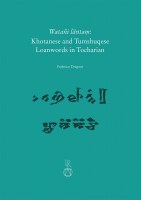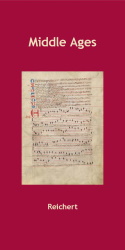Titelsuche
Watañi lāntaṃ
Khotanese and Tumshuqese Loanwords in Tocharian
Kurze Beschreibung
Contacts between Tocharian A and B and Khotanese and Tumshuqese, four languages once spoken in today’s Xīnjiāng Uyghur Autonomous Region in Northwest China, lack a comprehensive treatment and are still a controversial topic. This work contains the first systematic investigation of the matter from a linguistic point of view. Through a detailed analysis of the lexical material, the author is able to argue that the influence of Khotanese and Tumshuqese on Tocharian was much more extensive than previously thought and it spanned over almost two millennia, from the early Iron Age until the extinction of the four languages at the end of the first millennium CE.1. Preis der Indogermanischen Gesellschaft für die beste Dissertation (2022);
Award of Iranian Studies of the Societas Iranologica Europaea (2023)
Ausführliche Beschreibung
This work contains the first systematic investigation of the linguistic contacts between Tocharian A and B and Khotanese and Tumshuqese, four languages once spoken in the Tarim Basin, in today’s Xīnjiāng Uyghur Autonomous Region in Northwest China. The main part of the book is devoted to determining a corpus of reliable Khotanese and Tumshuqese loanwords in Tocharian: new borrowing etymologies are proposed, and some old correspondences are rejected. The discussion of the individual loanwords often involves a fresh examination of the text passages where they occur, and, in some cases, it offers lexical insights regarding a variety of neighbouring languages (Chinese, Middle Persian, Parthian, Sogdian, Gāndhārī and Old Uyghur). A detailed phonological, morphological, and semantic analysis of the corpus follows, with a view to determine the phonological correspondences, the relative chronology of the loanwords and possible historical scenarios of cultural exchange. One of the results of this investigation is that the influence of Khotanese and Tumshuqese on Tocharian was much more extensive than previously thought and it spanned over almost two millennia, from the early Iron Age until the extinction of the four languages at the end of the first millennium CE.Autoreninfo
Federico Dragoni was born in Milan in 1992. After an MA in clarinet (Conservatory G. Verdi, Milan), he turns to Iranian Studies (BA Sapienza University of Rome, MA Freie Universität Berlin). In 2022 he obtains a PhD in Linguistics from Leiden University as part of the NWO-funded project «Tracking the Tocharians from Europe to China: a linguistic reconstruction» led by Prof. M. Peyrot. He is currently employed at the Leiden University Centre for Linguistics as a postdoctoral researcher specializing in Iranian and Central Asian languages and cultures.Reihentext
The series Beiträge zur Iranistik was founded in the 1960s by Georges Redard and subsequently edited by Nicholas Sims-Williams from 1997 to 2020; the present series editor is Agnes Korn.
The series publishes works on the languages of the Iranian branch of Indo-European. The focus is on linguistics, including grammars, dictionaries, text editions, philology as well as diachronic and synchronic studies of linguistic topics. Neighbouring fields such as literature, archaeology and anthropology are likewise represented. The languages of the series are English, German and French. The Beiträge zur Iranistik are represented in libraries internationally and are widely used standard works of Iranian studies.
Verwandte Reihen:




 Vorwort
Vorwort

 Neuerscheinungen 2023/2024
Neuerscheinungen 2023/2024
 Gesamtverzeichnis 2023/2024
Gesamtverzeichnis 2023/2024
 Katalog Oriental Studies & Linguistics
Katalog Oriental Studies & Linguistics
 Mittelalter
Mittelalter
 Deutsche Inschriften
Deutsche Inschriften
 Musiktherapie
Musiktherapie
 Literaturen im Kontext
Literaturen im Kontext